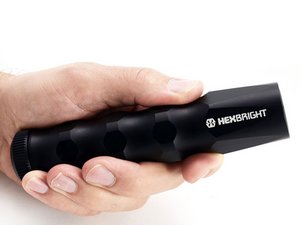 |
| A photo from the island from 2007 |
Part of the allure for me is that it is rustic. There is no commercial power to the island so when you are there you need to have a few critical tools with you. A pocket knife, a lighter and a flashlight are standard. You just always seem to need those with you. Since I am bit of an excessive when it comes to flashlights, this is just fine with me. I love little flashlights, and big flashlights, and ones that flash and one that do not, I love lanterns and spot lights, too. Which brings me to the point of this post.
A few years ago, I recommended to my neighbor, a US Navy SEAL, that he participate in a Kickstarter program for a custom made programmable flashlight called a HexBright. He put down his money and waited a pretty long time before the product became a reality. When he received his light, I was immediately jealous, it was a very cool; solidly built, rechargeable, very bright and long lasting.
But best of all, it is programmable! It is not a simple mode and level type programming; it is fully programmable, built around an Arduino board with an on-board accelerometer and high power LED drive circuit. I have been programming micro-controllers for a very long time, so this thing was perfect for me. I wanted one of these little guys very much, but the cost was nearly $100! That is lot of money for a flashlight, but I came into some found money, I think I won a gift card at a meeting and then I took all my loose change and cashed it out and it totaled just enough to get one. It is my absolute favorite tech tools. It is heavy duty, waterproof, self-contained and works perfectly. After I received it I began working on programming it right away. I was able to take an excellent existing program called "Up and Down" and improve it. With the program I made for it, it has capabilities far beyond the reach of any normal flashlight.
But best of all, it is programmable! It is not a simple mode and level type programming; it is fully programmable, built around an Arduino board with an on-board accelerometer and high power LED drive circuit. I have been programming micro-controllers for a very long time, so this thing was perfect for me. I wanted one of these little guys very much, but the cost was nearly $100! That is lot of money for a flashlight, but I came into some found money, I think I won a gift card at a meeting and then I took all my loose change and cashed it out and it totaled just enough to get one. It is my absolute favorite tech tools. It is heavy duty, waterproof, self-contained and works perfectly. After I received it I began working on programming it right away. I was able to take an excellent existing program called "Up and Down" and improve it. With the program I made for it, it has capabilities far beyond the reach of any normal flashlight.






